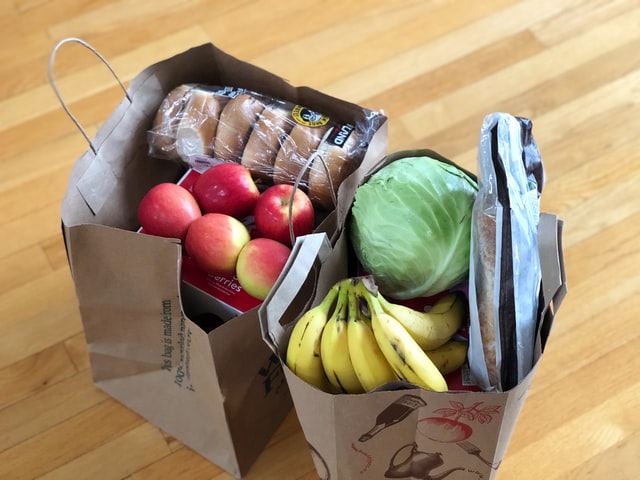Have you ever thought about your refrigerator rules or food storage guildelines. It’s very important to know some of its principles to adopt a healthy lifestyle. So today I thought to share some rules and guidelines of refrigerator.

Importance of Refrigeration
Before jumping into refrigerator rules let’s talk about some importance of refrigeration
Refrigeration slows bacterial growth. Bacteria exist everywhere in nature. They are in the soil, air, water, and the foods we eat.
When they have nutrients (food), moisture, and favourable temperatures, they grow rapidly, increasing in numbers to the point where some types of bacteria can cause illness.
Bacteria grow most rapidly in the range of temperatures between 40 and 140 °F, the Danger Zone, some doubling in number in as little as 20 minutes. A refrigerator set at 40 °F or below will protect most foods.
I think we must know how our kitchen hero works for us. I researched a lot to give you all correct informations. So let’s get started,
Refrigerator Rules

Above shown are some rules and regulations that we must follow. To get these printable checklist you can click here.
Refrigerator slows bacterial growth and prolongs the freshness of food.
Hence it is important to maintain the correct temperature of refrigerator and keep then clean so that frozen and chilled food remain safe.

Types of bacteria in Refrigerated foods
There are two completely different families of bacteria: pathogenic bacteria, the kind that cause foodborne illness, and spoilage bacteria, the kind of bacteria that cause foods to deteriorate and develop unpleasant odours, tastes, and textures.
Pathogenic bacteria can grow rapidly in the Danger Zone. The temperature range between 40 and 140 °F, but they do not generally affect the taste, smell, or appearance of a food. So we cannot tell that a pathogen is present.
Spoilage bacteria can grow at low temperatures. Eventually they cause food to develop off or bad tastes and smells.
You can also check proper and safe home food storage where you will get complete information about proper food storage at home.
Most people would not choose to eat spoiled food, but if they did, they probably would not get sick. It comes down to an issue of quality versus safety.

Refrigerator Storage Guidelines

1. Maintaining Safe refrigerator Temperature
- Keep the temperature of chillers between 0°C and 4°C the temperature of freezers at -12°C and below.
- Allow proper circulation of cool air by not overloading with too much food. Cool air should circulate freely to keep properly chilled.
- Avoid leaving the refrigerator door open for too long as this will raise the refrigerator’s temperature.
2. Storing Food safely in the Refrigerator
- Store food at the correct temperature as soon as it has delivered or prepared. This prevents growth of harmful bacteria and minimises the risk of food spoilage.
- Store cooked and ready to eat food above raw food and store them in separate, properly covered containers in the refrigerator to prevent cross – contamination.
- Do not store marinated food at room temperature as bacteria can multiply rapidly in foods at room temperature. Place them in covered containers and store it in refrigerator.
- Label food and include the date of purchase or preparation and the respective ‘use by date’. Adopt a First Expire First Out (FEFO) principle. Older food items that are stored in the refrigerator should be used first.
- Place food only after cool down. Don’t place very hot boiling food directly into the refrigerator.
- Don’t store perishable food in the refrigerator door. Put them on the shelves in the main part of the refrigerator. The temperature of food storage in the door can increase when the refrigerator is open.
A large pot of food like soup or stew should be divided into small portions and put in shallow containers before being refrigerated. A large cut of meat or whole poultry should be divided into smaller pieces or placed in shallow containers before refrigerating.
3. Keeping the Refrigerator Clean
One very important step in keeping your food safe is keeping your refrigerator clean. Wipe up spills immediately, clean surfaces thoroughly with hot, soapy water; then rinse.
Once a week, you should make it a habit to throw out perishable foods that should no longer be eaten. A general rule of thumb for refrigerator storage for cooked leftovers is 4 days.
- Clean the rubber lining of the refrigerator regularly.
- Clean the condenser coil regularly with a brush to remove dirt and dust so that refrigerator can work efficiently.
- Conduct a stock check every week to discard perishable food that has turned bad or has passed the ‘ use by date’.
Removing odours
Power cuts are common in our regions. So if your food has spoiled in your refrigerator during a power outage odours may come from the food remain, they can be difficult to remove. The following procedures may helps you for removing odours.
- Wash inside refrigerator unit with a solution of baking soda and water. Be sure to scrub the gaskets, shelves, sides, and door.
- Stuff unit with rolled newspapers. Close the door and leave for several days. Remove paper and clean with vinegar and water.
- Wipe inside the unit with equal parts vinegar and water. Vinegar provides acid which destroys odour.
Extra Notes
Most refrigerators-freezers sold today don’t require defrosting by the consumer. However, there are still units on the market and in homes that do allow frost to build up and require periodic defrosting.
When food is removed from the freezer for defrosting and the unit is turned off, it’s important to keep refrigerated foods cold and frozen foods from thawing. To do this, place the food in a cooler with a cold source or pack it in a box and cover it with blankets for insulation.
Do not use any type of electrical heating device, ice pick, knife, or other sharp object to remove frost, as this could damage the inner lining.
I hope you got some information to practice in our daily life. If you have any difficulty in those things create a routine that makes your daily life task in a simplified way.
Check out Daily Cleaning routine with printable checklist for some ideas. Which refrigerator rule is your favourite? Do you have a refrigerator cleaning routine. Let me know in the comment section below.
I will see you in another blog post.
with
❤️
Nasreen

Don’t forget to pin this for later!


 Coconut Buying Opening Storing Tips and Tricks
Coconut Buying Opening Storing Tips and Tricks
Leave a Reply